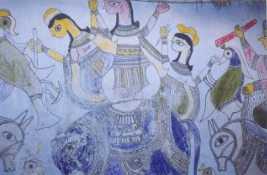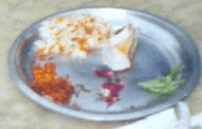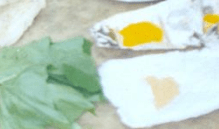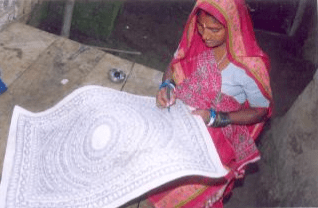TAre you looking for godna painting then check out this post to know more. here is a region in North Bihar called Mithila. Actually Mithila was one of the first Kingdoms to be established in eastern India. The region is a vast plain stretched north towards Nepal, south towards, the Ganges and west towards West Bengal.
Mithila region covers Darbhanga, Madhubani, Samastipur, Muzaffarpur, Vaishali, Supaul, and some parts of Munger, Bhagalpur, Begusarai, and purnia District of Bihar Some parts of Mithila comes under the province of Nepal We know through our Hindu mythology that, Rama, the Prince of Ayodhaya, married Princess Sita, daughter of king Janaka of Janakpuri (now in Nepal) of Mithila Raj, so she is also called Maithili in our religious texts.
List of godna painting
- History
- DIFFERENCE BETWEEN MITHILA PAINTING AND GODNA PAINTING
- PROCESS
- RANGE OF THE PRODUCT
- MARKET
- PACKAGING OF PRODUCTS
- CHANGES IN RECENT YEARS
- PROBLEM FACED BY ARTISANS
Mithila is a beautiful place if monsoon remains good, because all the commercial activities of this Mithila area depend upon good monsoon. But maximum times either less monsoon create major drought in this area or heavy rain due to much monsoon creates terrible situation in this economically poor region of North Bihar.
After many successive droughts in early sixty, Indian Government emissaries came to see the condition of the starving people of Mithila and saw the arts and paintings on the walls of huts of the poor villagers. Then they decided to help these peopleand save the tradition of the wall paintings. Rapidly, throughout India and abroad Mithila Paintings started getting popularity.
The traditional wall paintings as well as surface paintings for the beautification of dwellings and ritual purposes in Mithila are believed to have survived from epic period. From generation to generation the women of Mithila have produced a great style of wall and floor paintings (Aripan).
Godna Painting, very similar in look but different in motifs and cast of painters came forward after many years. It was not until 1972, that is, about five years after Brahmans and Kayastha women as well as men, mostly in Jitwarpur (Madhubani) village also began to do their Godna Painting commercially. In this Mithila region Brahmans and Kayasthas pictorial style of paintings are known as Madhubani or Mithila Painting.
History of godna painting
There is a third group of painters of Paswan community other than Kayasthas and Brahmins. This third group of Harijans came forward much latter. The women of Dusadh cast and some other Harijans as Chamar were doing all forms of traditional paintings and art forms for ritual purposes and also for the decoration of their huts.
They were not allowed to represent divinities and can only find inspiration from the animals, mineral and vegetable worlds. Their style of painting is known as Godna Painting. It is easily recognizable due the very unique background which is done with diluted cow dung.
They also experimented Godna (tattoo) style and other bright colours in their paintings due to the influence they got from the entrepreneurship and experiments of Brahmans and Kayasthas women. Their pictorial alphabet began to include lines, waves, circles, sticks and snails and became more abstract.
The main deity of the Dusadh’s is Raja Sailesh (also called Salhesh ) whose village shrine ( Gahbar) is usually adorned with paintings based on the their legends. They used to make similar scenes and clay reliefs of animals and birds on the walls of their clay huts, which became a very rare thing today.
If we go back to the history, we find that Godna painting is derived from the Godna (tattoo) making art of Nattins (women of gypsy tribe).They used to travel from village to village making different styles of Godna on the bodies of the villagers.
The poor women of lower casts who had to struggle even to survive could not afford to wear jewelry, so they liked Godna and love to get different styles of Godna on their body by Nattins. Even today one can see Godna on the body of old ladies in this area. But that body piercing process of Godna was very painful.
A German film maker and folklorist named Erica Moser saw these Godnas on the body of women during her several months visit to Jitwarpur for making of a documentary film in 1970. She was very impressed by this Godna and advised Paswan women to do the same Godna on the paper… Thus Godna paintings on the paper came into existence.
There are many outsiders who have recognized the inherent strengths of these wall paintings and the creativity of its artisan. They came to this backward Mithila region, stayed with them, interacted and encouraged various forms of innovation. They have done great jobs and brought this Harijan style of painting to the attention of larger and distinct audience.
William and Mildred Archer were the first among them who worked a lot between 1930 and 1940 to save the very old and artistic style of wall and floor paintings of this Mithila region of North Bihar. Uppendra Maharathi ,Bhaskar Kulkarni, Pupul Jaykar had done the same jobs between 1950s to 1970s. Raymond, Naomi & Ray Owens, Jyotindra Jain, and Tokio Hasegawa are among those who came later and tried their best to save this antique style of paintings and to take these poor artists in the lime light of the art loving world.
It was not until 1972, about five years afterBrahmans and Kayasthas women, mostly from Jitwarpur and Ranti Villages of Madhubani District began to do commercial painting, Dusadh women as well as men also started to do paintings on papers. Previously Dusadhs did not do ritually oriented wall paintings inside their homes. Occasionally they painted on the exterior and interior walls of their house with ornamental motifs and religious themes. They liked to paint serpent deities, animals, birds, and plants.
4 DIFFERENCE BETWEEN MITHILA PAINTING AND GODNA PAINTING
1. Godna Painting is done by the Paswans where Mithila paintingis done by the women of Brahmans and Kayasthas
2. Godna Painting is a lower casts (Harijan) painting where Mithila Painting is an upper casts painting.
3. Godna painting is a tribal painting where Mithila painting is painted by the land lords.
4. Dusadhs get their inspirations from the animal, mineral, or vegetable worlds but Brahmans and Kayasthas find their inspiration from the sacred texts of Hindu mythologies.
5. Mithila painting got a worldwide recognition earlier than the Godna painting.
6. The origin of Mithila painting seems very ancient than Godna painting.
7. Godna painting is very much inspired by body painting (tattoo) where Mithila painting is inspired through wall and floor painting.
8. Dusadh painters have depicted only Raja Salhesh and his brothers in their paintings where Upper casts have drawn mostly Gods and Goddesses e.g. Shiva, Durga, Kali, rama, Hanumana, and specially Krishna and Radha in their paintings.
9. Paswans use the light brown cow dung washed handmade papers as their canvas but Brahmans and Kayasthas use plain white handmade papers for paintings.
10. Harijans generally use more colours than upper casts.
PROCESS
Being the folk the villages, these artists depend on the natural sources for colours. Nature provides them with a wonderful range of natural colours derived from Bark, Leaf, flowers, seeds, and barries of the plants and trees. Clay and cow dung is also used in making of colours for the Harijan style of painting (godna) handmade papers is washed in cow dung and dried before using it as a canvas for paintings.
Usually they use 3 kinds of brushes-
1. They use bamboo twigs for the intricate details.
2. Small piece of cloth or cotton is used for filling in or space.
3. These days they have started ready made brushes and holder pens for more precise output.
Due to better commercialization of their paintings these days they are using synthetic colours easily available in the market. Now, colours come in powdered form which is then mixed with goat’s milks before using.
Making process of Natural colour
Black-carbon
Red-Bark of peepal tree
Green-leafs of sem
Blue-sikkat seeds
Yellow-Harsingar, Turmeric
RANGE OF THE PRODUCT
Godna painting is done for both decoration as well as utilitarian purpose. Initially, as use know that it on walls and paper and there they progressed towards conceptualizing to do godna painting on various products.
DECORATIVE PRODUCTS:
-For decoration purpose they are doing painting walls, paper, brass, terracotta and glass.
UTILITARIAN PRODUCTS:
-Doing Godna painting on canvas with the change in consumer taste and demand, consumers are interested and satisfied if are able to get these traditional painting done on their utility product. So the artisans are now taking initiatives in the development of such kind of utility products. Regarding utilitarian products this painting is mainly done a paper products and fabric.
Main products are:
-Sarees, Greeting, Suits, Cushion covers, Tie, Dupattas, shirts
MARKET
Godna painting has a very good market for their products both nationally and internationally. Its products are available in local hats as well as in Design store and exports stores. Craft fairs and exhibitions also keep in expanding the market and provide a platform for proper exposure. Due to this expansion of market the labour is getting fairly good price.
PACKAGING OF PRODUCTS
For packing of products they are still not developed. The painting they just roll it in paper and after that wrap it with polythene. For other products they do not follow any specific pattern of packaging they just wrap it in paper. When they give delivery of orders they just put a tag of their society; example: Salhesh Harijan Hastkala Udyog Samiti.
CHANGES IN RECENT YEARS
Technology –
•Now they have started design painting on Fabric, Brass, Terracotta and glass. As they cannot use natural colours for this so for this they are using enamel and fabric colours.
Design-
As such there are no major changes occurring in Godna Painting. Only the jeweler’s motifs which used on body are no longer in use. Only Salhesh and stories related to him are main motif of their paintings new days. Now they have started doing this painting on a wide range of products but the motifs are same.
Market-
New the market has shifted from local marker to international marker. Its market is wide spread and new market has shifted from traditional to consume. The artisans are engaged more in producing those goods that are fetching them more money.
PROBLEM FACED BY ARTISANS
Main problem faced by the artisans engaged in this craft is that they are not receiving fair share in income earned but the society. So they are still facing economical crisis and are leading a life in poverty. Further there are problems regarding the lack of basic infrastructure facilities. So even this craft has received international fame but an average artisan is not befitted by that exposure still now.











